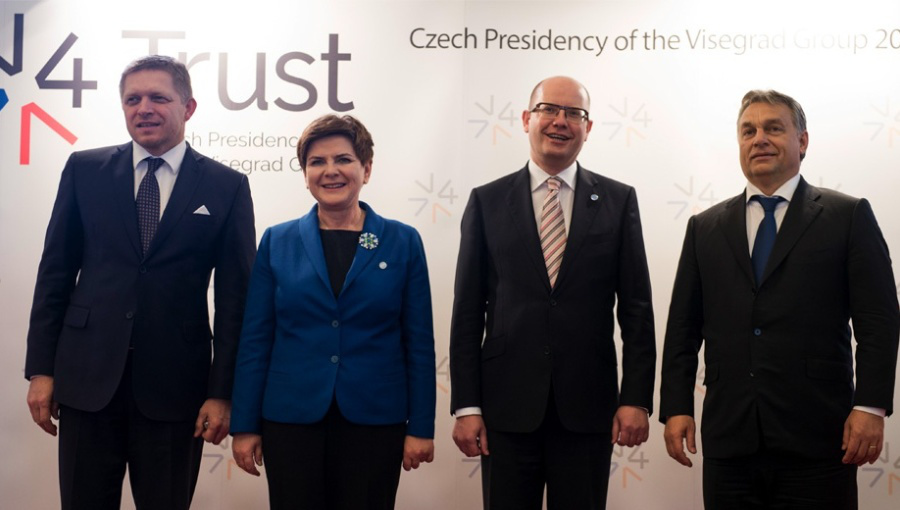Interesting piece by John GLJ Jacobs on the EU Security policy.”The failure to create a post-Gaddafi structure in Libya compounds a challenge, as its vast coastline provides enormous access across what is Europe’s longest “border”: the Mediterranean Sea itself. The rise of IS and the migrant crisis as a causal effect has jeopardized the future of the Schengen agreement as several EU states have introduced temporary border controls”.

The European Security Order: The order that no longer functions
The line on the cover page is the first sentence in the 13-year-old “European Security Strategy: A Secure Europe in a better World”, a better opening of this document in contemporary Europe would be the opening sentence of Ivan Krastev and Mark Leonard in their 2010 article in the Council on Foreign Relations:
“The European Union has spent much of the last decade defending a European order that no longer functions while hoping for a global order that will probably never come.”[2]
Andrew Cottey argues that regarding security the Europe of the early 21st century is radically different from its past, as the likelihood of war between Europe’s major powers is lower than at any time in modern history.[3]
It is evident that the European Common Defence and Security Policy requires revision as these events echo through in the security challenges Europe faces Anno 2016, with security issues outside our borders, security issues at our borders, and security issues within our borders. In this paper I focus on two elements for the revision of the European Security to consider. The first are three challenges in the maritime domain, secondly is the inane “competition” between EU and NATO, that undermines providing an answer to these maritime challenges.
Challenges in the ‘Second Domain’
The first challenge is the chaos enveloping the near Levant, notably Syria. The outflow of ten million refugees, of which (only) a million have made their way to Europe spark nationalism and populism, as well as inciting violence by and against foreigners. Stretching the Levant further, The failure to create a post-Gaddafi structure in Libya compounds these challenge, as its vast coastline provides enormous access across what is Europe’s longest “border”: the Mediterranean Sea itself. Here lies the first challenge calling for a common European Navy to protect this border. While the conflict in Syria will not be solved by naval power alone, Naval forces in the Eastern Mediterranean will aid to provide dominance in the region. The rise of IS and the migrant crisis as a causal effect has jeopardized the future of the Schengen agreement as several EU states have introduced temporary border controls. By being able to control the outside maritime border the EU, and working better together with Turkey and Greece may help the member states with the burdens it faces.
Another maritime challenge lies on the other side of Europe. A growing tension between major Arctic nations and members of the Arctic Council, call upon the EU to play a pivotal role. The majority of the Council — Denmark (Greenland), Norway, Iceland, Sweden and Finland, and arguably Russia — is from Europe, the latter three not being members of NATO but with increasing aggression of Russia that might change. The high costs and competing priorities between countries make it unlikely there will be a big arms race in the High North. Additionally, the changing climate opens up new trade routes in the Arctic. With new trade routes opened, such as the Northern Passage, unsecured, the militarization and economic gains add to the European Security concerns.
A final challenge lies in our economic dependency on trade, and deals with the prosperous part of the 2003 quote. Let us not fool ourselves to believe our military operations are not without ulterior motive. In this case, I am referring EUNAVFOR Somalia, more commonly known as ‘Operation Atalanta’ to counter piracy at sea off the Horn of Africa and in the Western Indian Ocean to protect our trade interests. I consider Operation Atalanta to be a successful maritime cooperation and fear these may be no longer possible with continuing budget cuts. With China’s ambition to rebuild the silk route, which largely will be maritime, our interest in securing the maritime trade route in the Mediterranean and Gulf of Aden increases. Especially considering our economic struggle is far from over, with the Greek situation far from resolved and declining demographics in many parts of the continent. Securing our trade routes is a top priority.
European and Atlantici
Within Europe, NATO must remain the central pillar of collective security. The inane “competition” between NATO and the European Union should stop, and replaced by a practical means of dividing tasks, missions, and skills. Such is challenging, frankly, due to the Cyprus situation, which puts Turkey in NATO’s camp and Cyprus in the EU’s. However it seems there is growing momentum for a settlement on Cyprus. If that occurs, the changes for better and more sensible cooperation between NATO and the EU in the realm of security is possible.
Regarding Russia and the second domain, the key will be finding new zones of cooperation in the maritime domain, even as Europe confronts Russian adventurism in Ukraine. Some of the elements of interaction might include political-diplomatic work in Syria; coordination on the refugee crisis, perhaps even a joint flotilla in the Eastern Mediterranean?; and considering an expanded counter-piracy mission to the Gulf of Guinea modelled on the successful NATO/EU and Russian cooperation off the Horn of Africa. Challenges in the Arctic are best met through the work of the Arctic Council and convening the military leaders from European member countries each year to create confidence-building measures.
Conclusion
The passive approach of the EU to a common defence is the underlying reason Krastev’s and Leonard’s multipolar divided Europe. Without a common defence policy focussed on the (maritime) challenges the union faces it is unable to protect its citizens from fear of security and stability echoes through from hard security issues (military threats at and in the Union’s borders) to soft security issues (such as; refugee/migration crisis, energy security questions, polarization, securitization, and the public’s distrust of economic and political institutions)[4]. Thus in answering the question on the future strategy of the EU, the dossier should, at least, include both hard issues and soft issues, secure against symptoms, but more importantly, focus on the challenges that transcend borders by finding common ground and integrated further in maritime security.
In sum two recommendations for the EU as security provider:
[1] – to decrease the risks of violence on the continent by solving frozen conflicts, thus reconfirming transparency and interdependence as pillars of European security and demilitarizing European Union’s periphery, in particular, Ukraine, the Balkan and Caucasus regions trough focussing on the maritime domain.
[2] – to institutionalise the EU as the key security actor on the continent and its surrounding oceans and enable it to use the range of tools it has at its disposal, in the first place its combined naval forces to deal with the threats (in the maritime domain) its member states face.
To end in maritime metaphor, paraphrasing Admiral (r.) James G. Stavridis: “Europe essentially sails beyond the stability of the metaphoric security we took for granted for so long, represented by the Pillars of Hercules. The economic, demographic, and geopolitical pressures on Europe will be immense. It will require strong leadership, steady strategic communications to a nervous population, help from across the Atlantic, and no small measure of good fortune to keep a secure and united Europe sailing.
See also: A united European security institution as a remedy against a multipolar, divided Europe
[1] First line in the 2003 European Security Strategy: A Secure Europe in a better World
[2] Krastev, Ivan., Leonard, M., et al. (2010), The Spectre of a Multipolar Europe, Council of Foreign Relations, p.1
[3] Cottey, A. (2012), Security in 21ste Century Europe, Palgrave Macmillan, p.13
[4] See Cottey, A. (2012), Security in 21ste Century Europe, Palgrave Macmillan, p.34; and Brown, M.E., (2003) Grave New World: Security Challenges in the 21st Century. Washington, DC, Georgetown University Press, p.28, See also United Nations (2004): A more Secure World: Our Shared Responsibility: Report of the Secretary-General’s High-Level Panel on Threats, Challenges and Change, 2 December 2004, UN General Assembly, resolution: A/59/565. New York, United Nations

 The invention of development: power, narrative, and the afterlife of Truman’s speech
The invention of development: power, narrative, and the afterlife of Truman’s speech  Is the World Trade Organisation a Failure?
Is the World Trade Organisation a Failure?  Is EU citizenship for sale – or for keeps? A critical analysis of the CJEU’s Golden Visa ruling.
Is EU citizenship for sale – or for keeps? A critical analysis of the CJEU’s Golden Visa ruling.  The European Union in Space: From exploration and innovation to security and autonomy
The European Union in Space: From exploration and innovation to security and autonomy 


